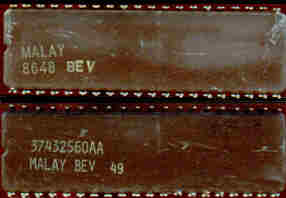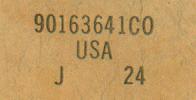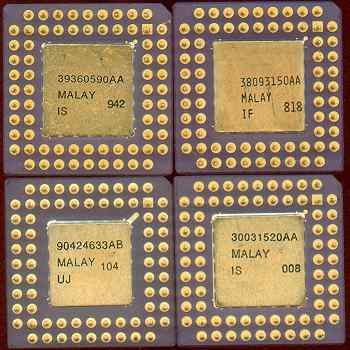| CONCLUSION A first
datecode is inserted within the long numeral (like
90424633AB) printed on the bottom of chips. The second
digit within this number indicates a year whereas digits
3 and 4 indicate a week (they never exceed 52). Thus
38093150AA stands for year (198)8, week 09.
The
first digit also may seem to indicate a year (in some
chips you may read 8927... or 9042....). According to
some sources it indicates a manufacturing plant. However,
it is rather surprising that, at first, the sole
manufacturing plant was number "8" (in such
datecodes like 8648, cfr. above). It was, clearly, just
indicating a year date. Later, in all chips manufactured
in Malaysia (those bearing MALAY), we can read either 9
or 3, instead of 8. This possibly indicates a second
("9") and a third ("3") manufacturing
plant (9 and 3 appear to be related to the short
alphabetic sigla appearing after the country indication:
IS, BF, UJ, etc.). Later on, in the nineties, many chips
will have 8 or 3, or even 5 or 7, instead of 9. This
indicated further manufacturing plants had been taken
into consideration.
In
any case, forget about the first digit, and look at the
subsequent three digits, which indicate actual year/week
of manufacturing. A second datecode, a two or three digit
number, appears on the lower-right corner of the bottom.
It indicates a week (sometimes a year as well) and it is
constantly higher than the former datecode. Apparently,
it was either impressed upon shipment, or after some
checking process had been completed.
|


